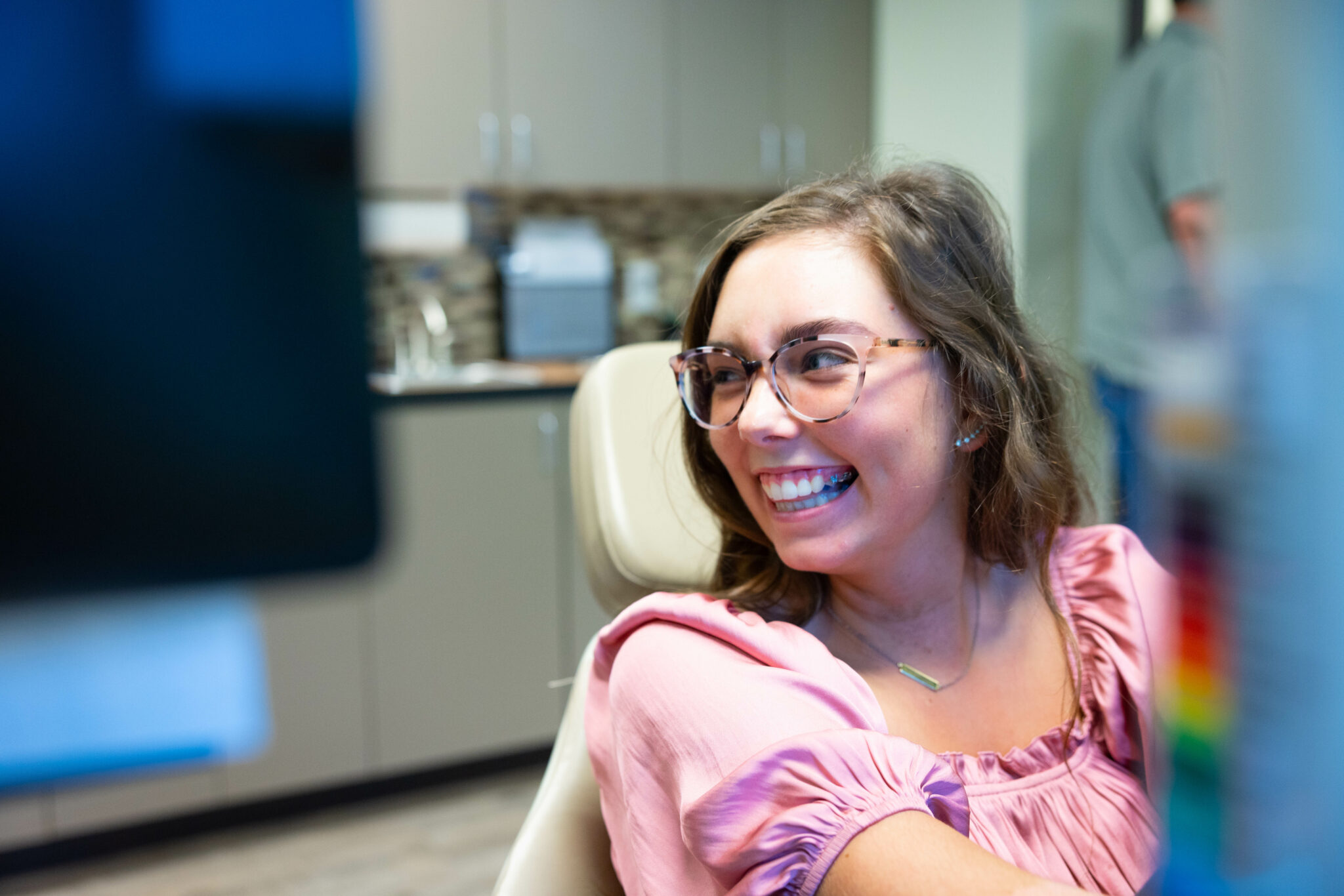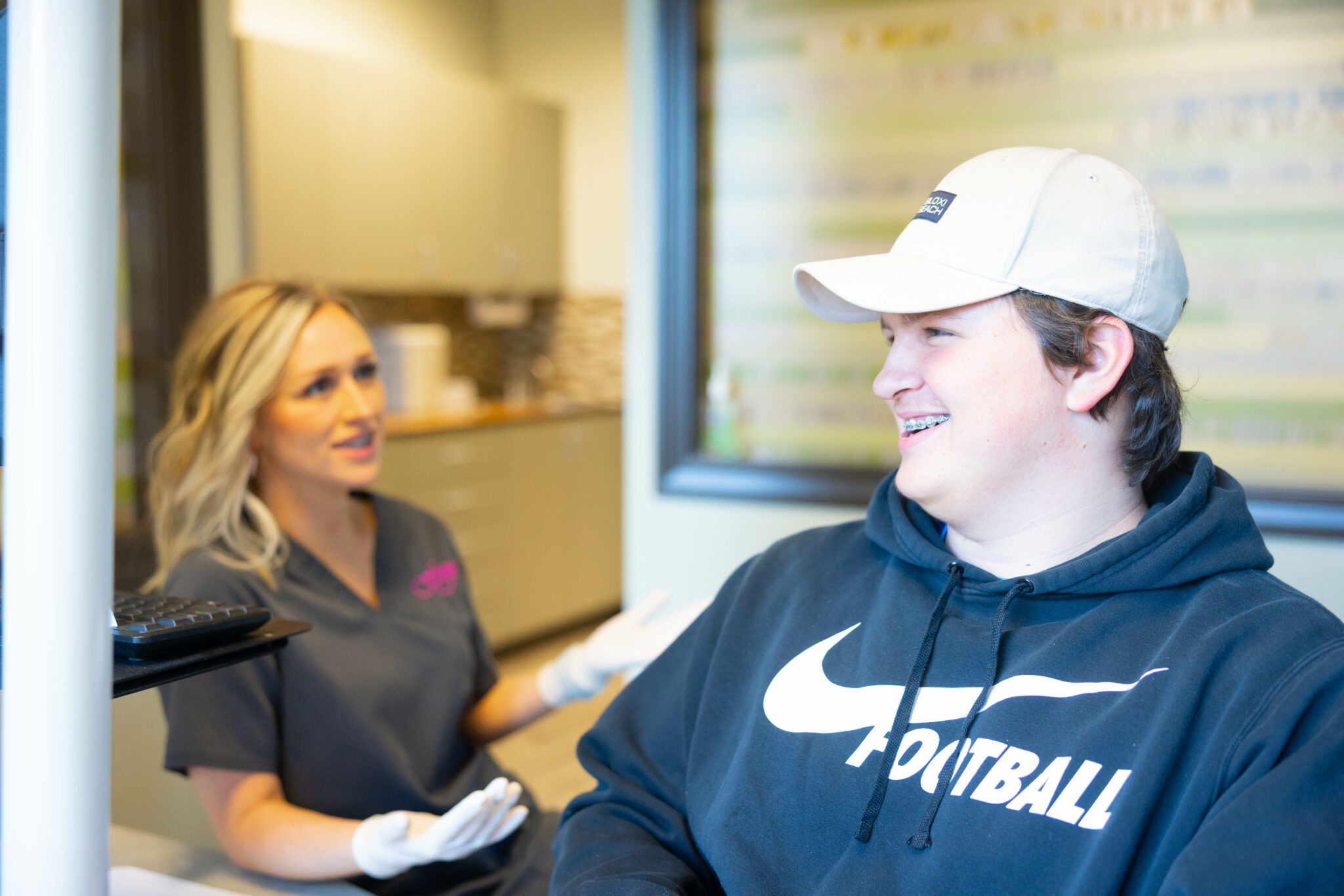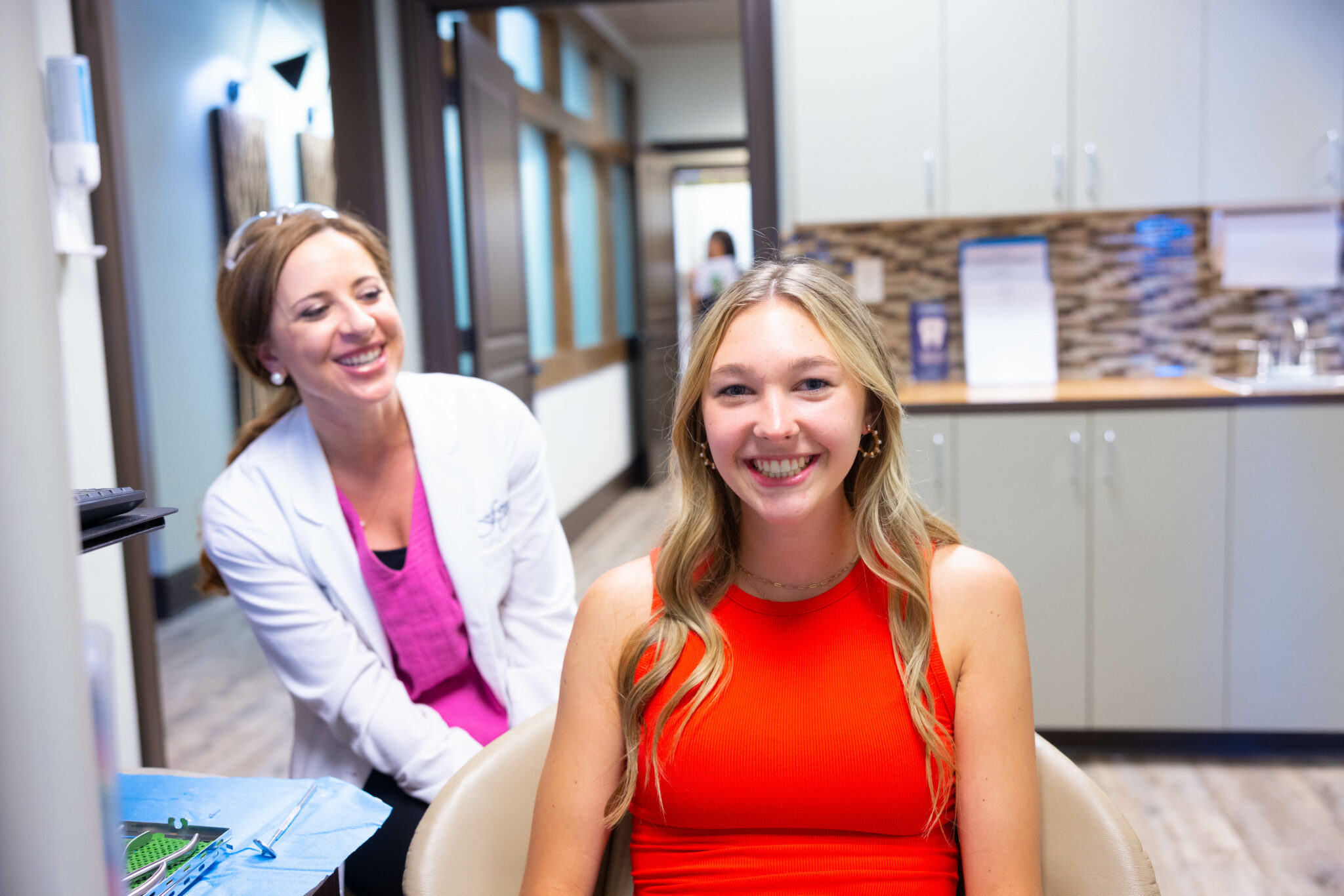It’s been a while since you’ve gotten your braces off, and one day, you notice a slight gap between your teeth. Maybe a couple of your lower teeth are crowded. What’s causing this, and do you know how to fix shifted teeth after braces?
Teeth shifting after braces is a common occurrence, but one that can be easily addressed with retainers. If you don’t wear your retainers correctly, you can lose that perfect smile you worked so hard to get.
How do you stop teeth shifting after braces and save your smile? Fergus Orthodontics can help!

How Braces Work
Teeth shifting after braces is typically related to the way the teeth move during treatment with braces or Invisalign. Whether you receive orthodontic treatment with braces, clear braces, or Invisalign, the treatment works the same basic way.
Braces and clear aligners apply gentle, steady pressure to your teeth, helping them shift into their ideal positions. This causes the bone in your jaw holding your teeth to break down. As it does, your teeth move slightly. The bone then fills in behind the tooth as it moves.
The breakdown of bone is called reabsorption, and the rebuilding of bone is called remodeling.
This process continues throughout treatment, with your body becoming accustomed to breaking down and rebuilding your jawbone as your teeth are straightened and properly aligned. The process begins slowly at the start of treatment and then gradually builds, allowing you to complete most of the treatment within 12-24 months.

Why Teeth Shift After Braces
Why do teeth shift back after braces? You might assume that bone reabsorption and remodeling stop once your braces or Invisalign are removed. That’s not the case — at least, not right away.
Once your body becomes accustomed to the process, it will continue until your teeth no longer shift. By then, your teeth could be back to being as crooked or nearly so as before you started braces treatment.
However, if your teeth aren’t allowed to shift or move from their new positions, the reabsorption stops. The remodeling is complete, and the bone has hardened to the strength it should have, holding the teeth in place. This process can take 6-12 months, and in some cases, minimal shifting can happen long after that.
There are ways to stop your teeth from shifting out of place once you’ve completed orthodontic treatment.
Using Retainers After Braces
The most effective way to prevent teeth from shifting after braces is to wear retainers. We will fit you for your retainers right after your braces are removed.
There are three basic types of retainers:
- Hawley retainers: A combination of acrylic material and wires. The plastic is custom-molded to fit your palate or gums and holds the wires that wrap around your teeth, keeping them in place.
- Essix retainers (Vivera retainers): Essix retainers look like clear aligners. They are custom-molded acrylic that fits all of the teeth instead of just those in the front. Vivera retainers are the Invisalign brand of Essix retainers.
- Permanent retainers: Also called lingual retainers or fixed retainers, they are bonded to the back of your front teeth and cannot be removed.
Fergus Orthodontics usually uses removable retainers, which many patients prefer.

Stopping Teeth Shift After Braces
Retainers prevent teeth from shifting, but you must wear them initially for at least 22 hours a day for them to be fully effective. This keeps your teeth from moving and allows your jaw to rebuild itself and harden, keeping your teeth in place.
On average, you must wear the retainers for 22 hours a day for about six months. After that, your jaws have hardened enough that we can reduce the time you wear retainers. Often, this drops to 8 hours a day, which most people choose to do at night by wearing their retainer while sleeping.
It is important to continue to wear your retainers even after we have reduced your time. Ideally, you’ll wear your retainers at night for a lifetime. This will keep your teeth in place and keep the smile created from braces treatment.
How to Tell If Teeth Have Shifted After Braces
How do you know if your teeth have shifted after braces? Eventually, you’ll be able to see your teeth twisting, crowding, or forming gaps. However, there are more subtle signs before it gets to that point. Catching it before then may mean you can avoid further treatment.
The most obvious sign is by using your retainers. Your retainers should fit your teeth perfectly. We may need to make minor adjustments immediately after you receive your retainers, but they should fit well afterward.
If you don’t wear your retainers as prescribed, you may begin to notice that they are harder to put on your teeth. That is a sign your teeth are shifting.
Contact us right away if your retainers become difficult to put on your teeth. Do not try to force them onto your teeth. You could damage the retainers, your teeth, or both.
How to Fix Shifted Teeth After Braces
How do you fix shifted teeth after braces? We may be able to stop and even reverse the damage with more consistent wearing of the retainers. We may have to adjust your retainers to help move your teeth back into place.
In some cases, it may require more orthodontic treatment. However, unless your teeth have done some serious shifting, we can correct the damage with a few months of clear aligners, rather than an entire braces treatment again.
We will thoroughly evaluate your teeth and determine the best course of action to repair them. We need to assess your teeth as soon as possible to prevent further damage. The sooner you let us know your teeth have shifted, the easier it will be to fix the damage.
Fixing Shifted Teeth in Jonesboro, AR
We understand not everyone wears their retainers as prescribed, though we strongly encourage our patients to do so. For those who start to lose that perfect smile, Fergus Orthodontics has ways to repair that teeth shift and return your beautiful, straight smile.
Schedule an appointment with Fergus Orthodontics in Jonesboro, AR, to find out the best way to fix your shifted teeth. Let us help you get — and keep — the smile of your dreams!









